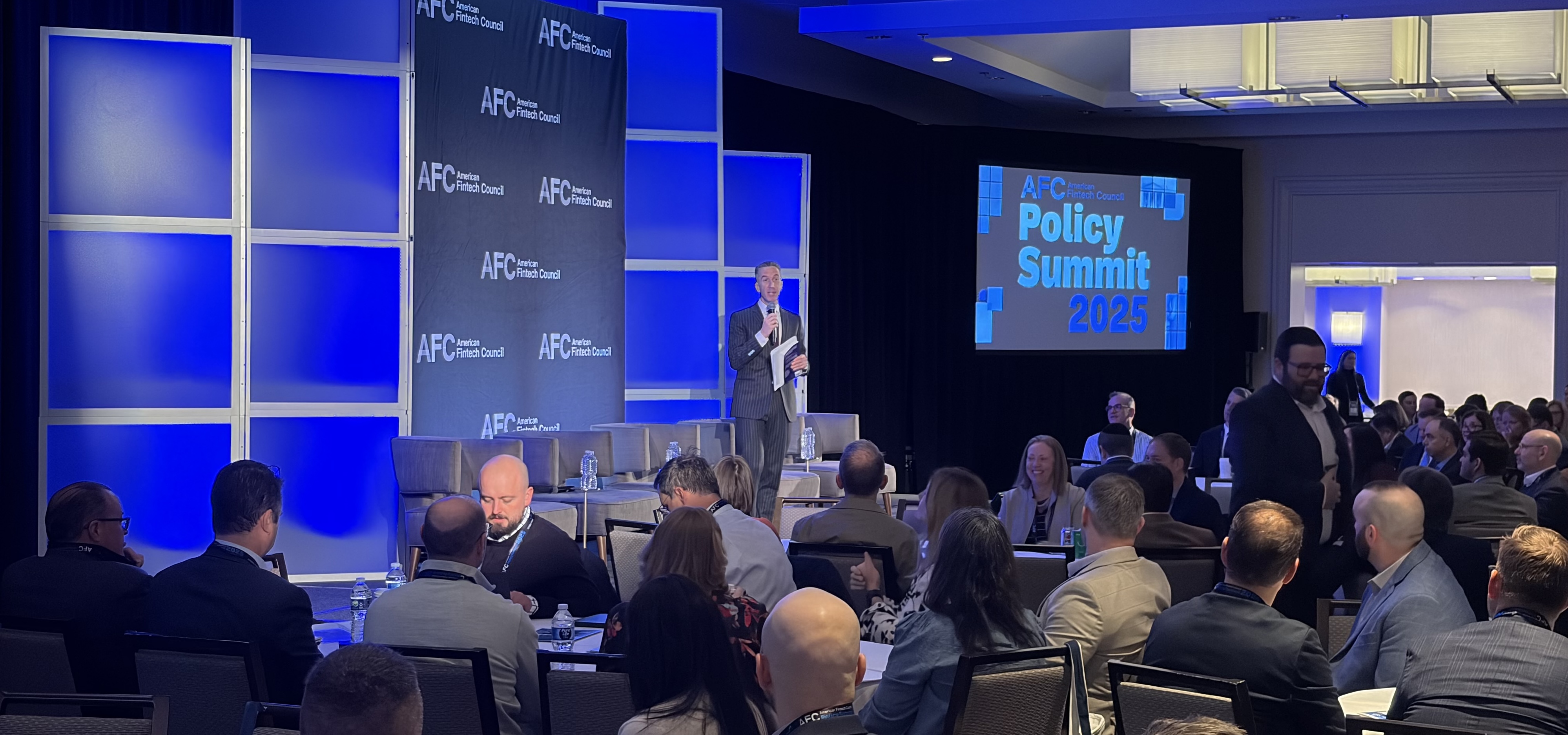
Inside AFC’s Policy Summit: Where Banks, Fintechs, And Regulators Actually Talk
Most fintech conferences feel like an expo floor with a conference bolted on. Lights, booths, parties, then somewhere in the background a panel about “the future of money.”
The American Fintech Council’s (AFC) Policy Summit is the opposite. Phil Goldfeder helped AFC become one of the most unique organizations in the industry because its focus is really to bring the FinTech, the sponsor bank, and the regulating body into the same room to talk.
I like this format because it prevents the most impressive content getting lost between side stages. So everyone can walk out with the same information and expectations.
These conversations couldn’t have happened at a better time.
Banks are Under Pressure
Things are a bit tense right now for banks.
Regulators issued a joint statement in 2024 warning about third-party arrangements, especially where banks deliver deposit products through fintechs. The agencies highlighted concentration risk, compliance failures, and reputational risk in these “banking-as-a-service” structures and laid out example risk-management practices.
At the same time, investigations and consent orders have shown that some banks are taking million-dollar hits on compliance failures tied to fintech programs, often because controls just weren’t strong enough. The pressure is real, even as some regulations appear to loosen, and the cost of failure is high.
The conversation with Jason Wilk, CEO of Dave, discussed these challenges. Dave is built on a partner-bank model, and no stranger to regulatory scrutiny from the FTC and DOJ.
The session turned into a look at how consumer-focused fintechs can keep scaling while regulators tighten expectations around disclosures, marketing claims, and third-party oversight.
On top of that, the OCC has redrawn the supervisory map.
National banks have been grouped into three size lanes: Large and Global, Regional and Midsize, and Community Banks. As of October 2025, Regional banks will have examiners that specialize in mid-tier balance sheets and compare them directly to peers in the same lane.
The OCC has stripped out some of the old one-size-fits-all procedural requirements for community banks and told examiners to tailor scope and approach to each bank’s actual risk profile.
AFC has spent much of 2024 and 2025 trying to understand what would make supervisory frameworks most effective in this environment. The answer keeps coming back to the quality of governance, the strength of risk management, and the reliability of the information banks use to run themselves and to answer their examiners.
How AI shows up when examiners are in the room
At Money20/20, AI tends to be framed as exciting ways banks can work faster, safer, or more creatively with a few side conversations on guardrails. At AFC, regulators talked about treating AI in financial services as a system-level vulnerability.
- The Financial Stability Oversight Council’s 2023 report flagged AI as a source of safety and soundness risks, including model risk and cyber risk, and called for oversight frameworks that keep up with rapid deployment.
- Treasury followed in 2024 with a dense report urging banks to treat every AI use case as a legal and compliance review first and a technical experiment second.
AI can break things in ways banks don’t always see until it’s too late, and even the regulators are still building their own inventories and governance systems.
When examiners speak, the priorities are blunt. Does the tool comply with existing law? Does it fit the bank’s risk appetite? How are third-party models governed, monitored, and tested? What happens when fair-lending rules collide with machine-learning shortcuts?
That’s part of why Travis Hill’s presence was notable. He’s been Vice Chair since 2023, became Acting Chair in early 2025, and he’s shown up at the AFC summit two years running. His session pressed on the same tension every regional bank and fintech is living with: modernize, but stay in step with supervisors who are updating their frameworks in real time.
Our Takeaways If You Couldn’t Attend
If you are a bank leader, fintech founder, or sponsor-bank executive who did not attend, you can still steal the underlying playbook.
- Treat your examiner relationship as a standing conversation.
Do not wait for the next exam cycle to introduce new fintech partnerships or AI tools. Set up regular touch points to walk through what you are building, what controls you have, and what open questions you see. - Bring real data
Regulators are increasingly focused on how models behave in production and how program risks show up in metrics, not just on your architecture diagrams. Being able to show clean lineage and defensible metrics is becoming table stakes.
- Choose events where regulators actually participate.
Policy summits that feature acting agency heads, staff examiners, and policy lawyers who write guidance are worth far more than another roundtable with only vendors. AFC’s summit is one example; there are others in different regions and sectors. - Frame AI and fintech through the supervisory lens.
The question is rarely “Can we do this cool thing?” It is “How does this fit within existing law and risk frameworks, and how will we prove that to an examiner?” Align your internal conversations with the same framing regulators are using in their reports and RFIs.
Our Team Loves Helping Banks Improve their Data Architecture
iDENTIFY helps regional and community banks turn scattered deposits, loans, and program data into exam-ready evidence. We build a bank-owned Snowflake layer that pulls in core, processor, and fintech activity, then give your risk and finance teams clean, reproducible metrics with clear lineage.
That means you can:
- Show how BaaS and fintech programs roll up into concentrations, losses, and fee income
- Trace AI and model outputs back to their inputs and assumptions
- Give ALCO, Risk, and the board one set of numbers that match what examiners see
- Answer “show me this as of quarter-end” without a scramble
If you are rethinking how your bank shows its work to supervisors, we can walk you through how other institutions in your asset band are using Identify to tighten governance, reduce manual reporting, and come into exams with fewer surprises.









